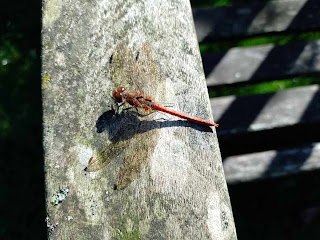The one damselfly species which breeds in the New Forest and which we have never seen is scarce blue-tailed damselfly. Asking for recommendations for sites for this species in the New Forest on the British Dragonflies and Damselflies Facebook group resulted in three suggestions for sites. So we set out to explore those three sites over the last week and a bit.
First of all, Ipley Stream, near the footbridge. The weather was quite cold and windy, and we saw no damselfly activity there. So we decided to cut across to the pond on Dibden Bottom, from there head for Rushbush Pond and then follow the Ipley stream back to the footbridge. The only common damselfly species was the emerald damsel; plenty of males and females around the Dibden Bottom pond.
Rushbush Pond was quite uncharacteristically pretty devoid of odo's, but we did see a few blue-tailed damsels.
No SB-tD, though!
Then Latchmore Brook and the boggy areas immediately north of the stream which we visited last week. Twelve damseldragon species in all, including three species of hawkers (brown, migrant, southern), small red damsels, small red-eyed damsels, ...
... and blue-tailed damsels.
We did see an unusual blue-tailed damsel, which raised our hopes for a while, until it was confirmed as an andromorph female blue-tailed damselfly.
Third and final site, today, was Roundeye Hill, especially the ditch which runs to the Beaulieu river.
Once again, the weather wasn't very good for damseldragonflies, as it was quite windy. The sun did show its face every once in a while, though. We saw a beautiful demoiselle and a golden-ringed dragonfly at the river, and plenty of common darters and several keeled skimmers along the ditch. In terms of damselflies, just a single small red damsel and a few blue-tailed damsels.
So for the third time running, 'common' blue-tailed damsels at every site, but no SB-tD ...
We'll definitely try at least the Roundeye Hill ditch again next year, but earlier in the season, as scarce blue-tails were seen there in decent numbers in July. We'll keep desperately seeking SB-tD until we find them!
No tables for this blog post, by the way, as it covers multiple sites and dates



























































